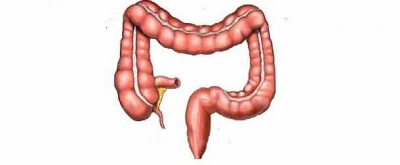
The large intestine is the final stage of the digestive system. It’s where most of the water, and the last few nutrients, are taken from the chyme that enters from the small intestine.
It then moves unusable waste out of the body. Most nutrients have been taken from the food before it gets to the large intestine – but there is still vital work for it to do Here, trillions of bacteria help to break the remaining food down into valuable nutrients. The large intestine is wider than the small intestine but it’s not nearly as long.
The large intestine has 3 primary functions: absorbing water and electrolytes, producing and absorbing vitamins, and forming and propelling feces toward the rectum for elimination. By the time indigestible materials have reached the colon, most nutrients and up to 90% of the water has been absorbed by the small intestine. The role of the ascending colon is to absorb the remaining water and other key nutrients from the indigestible material, solidifying it to form stool. The descending colon stores feces that will eventually be emptied into the rectum. The sigmoid colon contracts to increase the pressure inside the colon, causing the stool to move into the rectum. The rectum holds the feces awaiting elimination by defecation.
Picture Credit : Google

